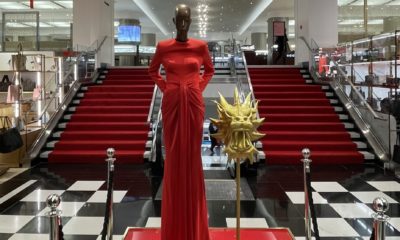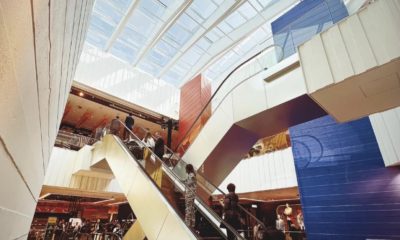THE SWISS-BORN ARCHITECT Charles-Édouard Jeanneret, a.k.a. Le Corbusier, said, “By the use of raw materials and starting from conditions more or less utilitarian, you have established certain relationships which have aroused my emotions.”
To Corbu, architecture was an esteemed art and a high-minded calling. He passionately said, “You employ stone, wood and concrete, and within these materials you build houses and palaces. That is construction. Ingenuity is at work. But suddenly you touch my heart, you do me good, I am happy and I say: ‘This is beautiful.’ That is Architecture. Art enters in.”
The early brick-and-mortar retailers understood the emotional impact and inspirational effects of powerful architectural statements. A successful retail environment is complex, both from its operational and functional requirements to its product offerings and merchandise content. So much so that a store can be a chaotic entity. Whether designing a retail space or a residential housing development, one of the roles of the architect is to create order out of chaos. Louis Sullivan understood the importance of shape, structure and proportion when he coined the phrase, “Form follows function.” Frank Lloyd Wright, however, countered with, “Form and function must be spiritually united.” It must be remembered, as Le Corbusier suggested, architecture, as with any other art form, must move the emotions, it must touch the heart.
Change and challenge are frequently the catalysts for inspiration and innovation. Art and architecture serve as bookmarks and reference points to cultural movements and societal concerns. In the later part of the 19th century, the New York City school system was faced with a challenge of epic proportions. Specifically in 1874, primary school attendance became mandatory for all New York City children. This, coupled with a new wave of immigration to America’s melting pot, pushed the distressed and overcrowded school system ever closer to total disfunction. What followed was the inspiration and innovation of C. B. J. Snyder. In 1891, Snyder, an architect by trade, was appointed Superintendent of School Buildings. His charge from the city was to build an adequate number of schools to meet the challenge of an overburdened, overcrowded and crumbling school system.
Snyder’s goal for the beleaguered school system went far beyond solving the issue of physical capacity. Rather, his vision was to create temples of education to elevate the capacity to learn. As Snyder was developing his plans to create aesthetically beautiful surroundings for New York’s young learners, the City Beautiful Movement was promoting the notion that beautiful architecture and dynamic urban planning could have a positive impact on the everyday lives of the rapidly growing population of the Big Apple.
During his tenure, Snyder spearheaded a period of beauty and elegance across New York that impacted and, in fact, changed the lives of a multitude of school aged children. With inspiration drawn from a wide range of architectural movements, including the splendor of the Renaissance and the Baroque periods, to the Beaux-Arts period and, in some cases, references to Dutch Colonial imagery in old New York, Snyder’s Cathedral-like structures featured high-reaching gothic towers, limestone and terra cotta ornamental carvings, oriel windows supported by decorative corbels, and oversized classroom windows that welcomed in natural light.
Advertisement
A visionary of rare talent, Snyder visually changed the purely utilitarian and totally mundane schoolhouse into a high functioning citadel of education. At the same time, retailers in cities across the country were building similarly appointed castles of consumption in the form of the first department stores. In New York, Ladies Mile became the birthplace of many of the newfound retail establishments. The bustling retail corridor along 6th Avenue responded to the City Beautiful Movement and the Chicago World’s Fair of 1893 with a broad representation of Beaux-Arts, Neo-Renaissance, Romanesque Revival and Queen Anne style grand emporiums.
However, with the unrelenting march of time, politics and bureaucracy, stores and schools that once resembled palaces and cathedrals, began to look more like factories, and even worse, like prisons. When designing an environment, whether brick-and-mortar or virtual, particularly in the face of change and challenge, retailers and educators alike must recognize the motivational, aspirational and persuasive power of aesthetics. Snyder demonstrated that the nature and aesthetic quality of a building affects its functionality and the ultimate experience of those engaging in the space. The beauty, grace and elegance of physical form and mass, as well as that of augmented reality and cyberspace, greatly impacts the shopping experience and the learning experience.
As retailers and educators turn to the art and science of architecture in their efforts to define the shape and content of the future, it must be understood that form and function aren’t mutually exclusive. Rather, one must enhance the other to further enhance the experience of life.

 Photo Gallery1 week ago
Photo Gallery1 week ago
 Headlines1 week ago
Headlines1 week ago
 Headlines2 days ago
Headlines2 days ago
 Headlines1 week ago
Headlines1 week ago
 Headlines1 week ago
Headlines1 week ago
 Designer Dozen2 weeks ago
Designer Dozen2 weeks ago
 Designer Dozen6 days ago
Designer Dozen6 days ago
 Headlines1 week ago
Headlines1 week ago





















